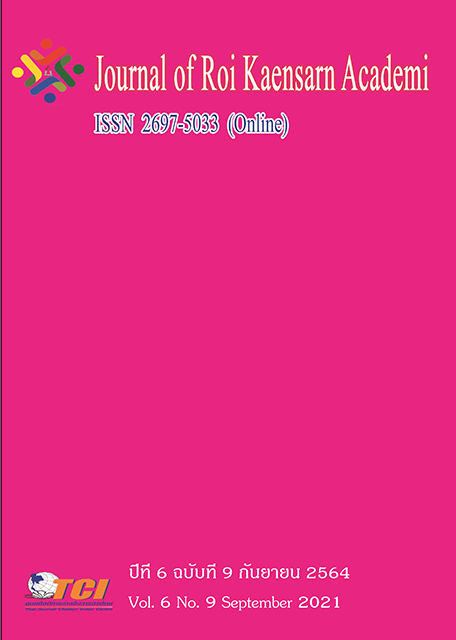The Benefit Type Have Influence to Engagement in Kunming University
Main Article Content
บทคัดย่อ
The purpose of this research was to study “The benefit types have influence to engagement in Kunming university.” The samples were 322 employees who are working in the Kunming University with values of Alpha reliability reaches 0.962. The statistics used in data analysis are primarily descriptive statistics were percentage, mean, standard deviation. And citation statistics were used to test the hypothesis that the significance level of 0.05 is the Multiple Regression Analysis. The results of this research showed that samples were females counted as 61.4%, aged 41- 50 years counted as 30.0%, married counted as 79.5%, graduated with Master's degree or higher counted as 40.3%, the position of teacher counted as 67.1%, and more than 5 years of work duration counted as 74.6%. The major benefit types that have influenced all the factors of engagement were Social insurance and Statutory holidays. Minor benefit type of Annual leave has influenced to the Commitment factors of engagement and benefit type of Free or low-cost canteens has influenced to the Loyalty factors of engagement.
Article Details
เอกสารอ้างอิง
Amah, E., & Ahiauzu, A. (2013). Employee involvement and organizational effectiveness. Journal of Management Development.
Barber, J. P., Crits-Christoph, P., & Luborsky, L. (1996). Effects of therapist adherence and competence on patient outcome in brief dynamic therapy. Journal of consulting and clinical psychology, 64 (3), 619.
Brett, J. M., & Reilly, A. H. (1988). On the road again: Predicting the job transfer decision. Journal of Applied Psychology. 73 (4), 614.
Behera, B., & Vishnu, R. (2011). Analysing the impact of anthropogenic factors on the environment in India. Environment and Natural Resources Research, 1(1)1
Creed, W., Miles, R. E., Kramer, R., & Tyler, T. (1996). Trust in organizations. Trust in organizations: Frontiers of theory and research, 16-38.
Leary, T. G., Green, R., Denson, K., Schoenfeld, G., Henley, T., & Langford, H. (2013). The relationship among dysfunctional leadership dispositions, employee engagement, job satisfaction, and burnout. The Psychologist-Manager Journal, 16 (2), 112.
OMAR, N. (2019). A STUDY ON FACTORS INFLUENCING ON IMPROVING EMPLOYEE ENGAGEMENT AT ATREE, BANGALORE. Bangalore University,
Parkes, L. P., & Langford, P. H. (2008). Work-life balance or work-life alignment? A test of the importance of work-life balance for employee engagement and intention to stay in organisations. Journal of Management and Organization, 14 (3), 267.
Saks, A. M. (2006). Antecedents and consequences of employee engagement. Journal of managerial psychology.
Umoh, G., Amah, E., & Wokocha, I. (2014). Employee benefits and continuance commitment in the Nigerian manufacturing industry. IOSR Journal of Business and Management, 16 (2), 69-74.
Van Breukelen, W., Van der Vlist, R., & Steensma, H. (2004). Voluntary employee turnover: Combining variables from the ‘traditional’turnover literature with the theory of planned behavior. Journal of Organizational Behavior: The International Journal of Industrial, Occupational and Organizational Psychology and Behavior, 25 (7), 893-914.
Yamane, T. (1973). Statistics: an introductory analysis-3.

